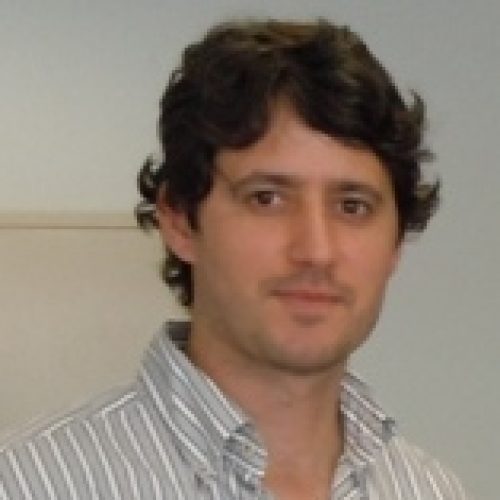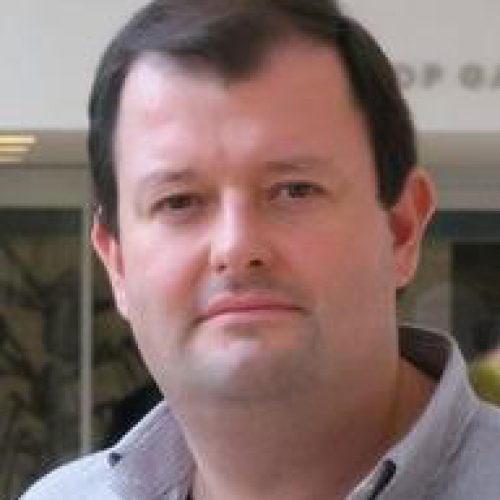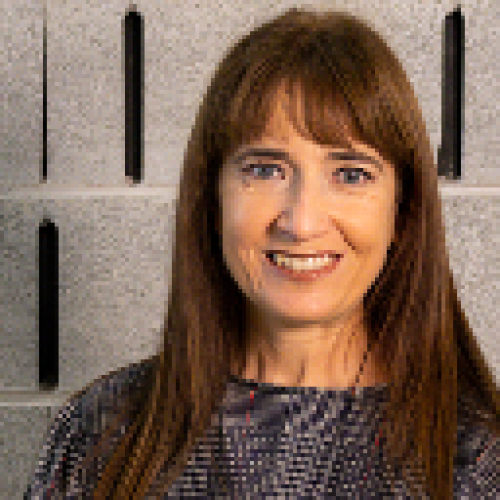PHASAGE
PhasAGE – Excellence Hub on Phase Transitions in Aging and Age-Related Disorders
EXPERT SEMINAR SERIES
The PhasAGE Expert Seminars consist of a series of talks with speakers from PhasAGE partner’s institutions to promote a successful transfer of knowledge about PhasAGE topics – biomolecular phase separation, aging and age-related diseases – between the partners of the consortium.
The seminars are integrated into visiting actions between the institutions to create an interdisciplinary environment for collaborative research on biomolecular phase transitions.
Due to the Covid-19 pandemic situation, the seminars scheduled until November 2021 were exclusively online.
19 October 2023 | Instituto de Investigação e Inovação em Saúde (i3S)
The seminar was co-hosted with the III PhasAGE International Conference.

Natural and Synthetic Prion-like Domains: Functions and Applications
Amyloid assemblies are primarily recognized for their pathological implications in neurodegenerative diseases. Nevertheless, their inherent characteristics, including modularity, hierarchical assembly, mechanical properties, and environmental stability, offer significant potential for diverse functional applications. Here we describe how our comprehension of the sequential determinants of amyloid assembly has facilitated the development of novel nanomaterials with catalytic, biosensing, virus-neutralizing, cell recognizing and cell activating functionalities.
Host: Sandra Ribeiro (IBMC/i3S)
11 September 2023 | University of Padova (UniPD)

Flexible, decorated and tight – a new breed of peptide anticoagulants
Host: Silvio Tosatto (UniPD)
23 May 2023 | University of Padova (UniPD)

Breaking the aggregation chain with small molecule inhibitors: a path for Spinocerebellar Ataxia type 3 therapies
Host: Silvio Tosatto (UniPD)
27 April 2023 | Vrije Universiteit Brussel (VUB-VIB)

NAGpkin: a new web tool for seamless quantification of Nucleation-And-Growth KINetics of Protein phase separation
NAGpkin (beta version) is a free web tool for characterizing the mechanisms of protein phase separation. Protein phase separation is relevant in both health and disease in phenomena such as the liquid-liquid phase separation of functional droplets, or the self-assembly of proteins into solid aggregates called amyloids. Raw data describing the formation of a new protein phase is analyzed to quantify the relative importance of the kinetic steps of primary nucleation, secondary nucleation and growth. Information about the possible occurrence of Off-Pathway Aggregation, Surface Tension Effects and coalescence is also provided.
Host: Peter Tompa (VIB)
28 March 2023 | Instituto de Investigação e Inovação em Saúde (i3S)

The contribution of IDR in Neurodevelopmental Disorders
Neurodevelopmental Disorders (NDDs) are impairments of the growth and development of the brain and the central nervous system. The most common NDDs include autism spectrum disorders (ASD) and attention Deficit disorder (ADHD), and intellectual disability. Next-generation sequencing studies have revealed the major impact of de novo variants (DNVs) in NDDs. However, a substantial fraction of these DNVs are frequently disregarded and remain of uncertain significance, in particular the missense variants mapping in intrinsically disordered regions (IDRs) acting via non-haploinsufficient mechanisms. By means of computational tools, we investigated the effects of variants located in IDRs identified in a subset of high confidence NDDs-associated genes. The impact of the variants was estimated considering IDRs-specific feature, including the various classes of functional linear motifs and the phase-separation-promoting features.
12 December 2022 | Vrije Universiteit Brussel (VUB-VIB)
The seminar was co-hosted with the PhasAGE-VIB International Conference.

Ataxin-3 self-assembly inhibitors: opportunities and challenges for Spinocerebellar Ataxia Type 3 therapies
ataxin-3 aggregation process itself contributes to the underlying neurodegeneration. Therefore, addressing pathogenic ataxin-3 aggregation represents a promising approach for developing disease-modifying treatments for SCA3. I will show how we are combining in silico, in vitro, in situ, and in vivo studies to study molecules with anti-ataxin-3 aggregation properties. In particular, I will show data on a small molecule that delays ataxin-3 assembly into amyloid fibrils by stabilizing its monomeric state and modifying its aggregation kinetics. This molecule has a clear potential as a disease-modifying therapy for SCA3 as it was able to alleviate motor deficits of the SCA3 C. elegans model and early symptomatic treatment also delayed disease installation and significantly improved motor behavior of a SCA3 transgenic mouse model.
Host: Peter Tompa (VIB)
4 November 2022 | Autonomous Universtity of Barcelona (UAB)

Regulation of neuronal organelle transport by the scaffolding protein JIP3
Host: Salvador Ventura (UAB)
14 October 2022 | Instituto de Investigação e Inovação em Saúde (i3S)
The seminar was co-hosted with the i3S Friday Noon Seminar Series.

Intrinsic Protein Disorder and Conditional Folding in AlphaFoldDB
availability of accurate structure predictions on a large scale in AlphaFoldDB offers a fresh perspective on IDR prediction. Here we
establish three baselines for IDR prediction from AlphaFoldDB models based on the recent Critical Assessment of Intrinsic Protein Disorder (CAID; Necci et al., Nat. Meth. 2021) dataset. Surprisingly, AlphaFoldDB is highly competitive for predicting both IDRs and conditionally folded binding regions, demonstrating the plasticity of the disorder to structure continuum.
Host: Sandra Ribeiro (IBMC/i3S)
22 April 2022 | Instituto de Investigação e Inovação em Saúde (i3S)
The seminar was co-hosted with the i3S Friday Noon Seminar Series.

Liquid-liquid phase separation and stress granule dynamics in amyotrophic lateral sclerosis (ALS) and frontotemporal dementia (FTD): challenges and future perspectives
Host: Sandra Ribeiro (IBMC/i3S)
3 December 2021 | Instituto de Investigação e Inovação em Saúde (i3S)
The seminar was co-hosted with the i3S Friday Noon Seminar Series.

Natural and Synthetic Prion-like Domains: Functions and Applications
Talk Summary
Amyloid fibrils are most known because of their association with disease. However, nature also exploits amyloid structures for functional purposes, and, indeed, researchers have used the unique molecular architecture of amyloids to build up different materials. Prions are a particular set of amyloids that can switch between a soluble conformation and an amyloid state. This ability usually relies on a disordered and low-complexity region known as the Prion Domain. Originally thought to be restricted to yeast, functional prion-like proteins displaying these sequences have also been identified in other organisms. Here we describe how a natural Prion-like Domain (PrLD) has evolved to substitute for the function of extracellular globular domains in bacteria and demonstrate how the particular properties of this kind of sequences can be employed to design synthetic PrLDs able to self-assemble into novel functional nanomaterials.
Host: Sandra Ribeiro (IBMC/i3S)
15 November 2021 | ONLINE EVENT

Dissecting the contribution of motor-cargo adaptors to microtubule-based transport in neurons
Reto Gassmann is a group leader at the Institute for Research and Innovation in Health (i3S) in Porto interested in cell division and microtubule-based intracellular transport. His group uses live-cell fluorescence microscopy, genetics, and biochemical approaches in the nematode Caenorhabditis elegans and human cultured cells to study the function and regulation of cytoplasmic dynein 1, the major microtubule minus end-directed motor in animal cells.
Talk Summary
Long-rage intracellular transport of vesicles and organelles by microtubule-based motors is critical for the development, survival, and function of neurons. A central unanswered question is how the microtubule minus end-directed motor cytoplasmic dynein 1 (dynein) and plus end-directed kinesins work together to set up useful bi-directional transport systems. To gain insight into the underlying regulatory mechanisms, our approach is to generate and characterize separation-of-function mutations that disrupt specific protein-protein interactions between motors and their cargo adaptors. I will present our recent work on the conserved MAP kinase scaffold JIP3, which suggests that JIP3 uses its interaction with dynein and kinesin-1 to drive bi-directional transport of endo-lysosomal organelles in C. elegans touch receptor neurons.
Chair: Valérie Bercier (VIB-KU Leuven)
14 June 2021 | ONLINE EVENT


Inhibition of age-associated genomic instability: emerging strategy to delay cellular senescence and aging
Since 2015 E. Logarinho (EL) leads the Aging & Aneuploidy group, dedicated to high-profile research on the mechanisms of cell cycle deregulation and genomic instability contributing to aging and age-related diseases. The group applies interdisciplinary approaches to address how regulated instruction of proliferative fitness and genomic stability decelerates senescence in mouse models of Down syndrome, progeria and aging. Within i3S Cancer Program, EL is tackling the question on how aging is the major risk factor for tumorigenesis, with focus on chromosomal instability and senescence. EL is currently vice-coordinator of the Cancer Program and member of the Restrictive Scientific Council.
Talk Summary
One of the major goals of aging research is to develop strategies to delay and even reverse aging. Emerging findings indicate that genomic variations are a relevant and under-recognized mechanism underlying human aging and age-related diseases. Our group has been focused on genetic and pharmacological interventions protecting against genomic instability and addressing their impact in senescence accrual. Our recent findings will be presented.
Chairs: Javier Garcia-Pardo (UAB) and Susanna Navarro (UAB)
26 April 2021 | ONLINE EVENT

Phase Separation: an emergent function of disordered proteins
Group Leader at VIB’s Structural Biology Research Center in Belgium. Peter is also a professor of biochemistry at the VUB (Free University Brussels), and at the Institute of Enzymology, Research Centre for Natural Sciences, Hungarian Academy of Sciences (Budapest, Hungary). Peter Tompa is an expert in structurally disordered proteins and phase separation research in cell physiology and disease.
Talk Summary
Intrinsically disordered proteins (IDPs) lack a well-defined structure, yet they fulfil important functions in the cell. It was recently recognized that they can undergo physiological condensation (liquid-liquid phase separation, LLPS) leading to the formation of cellular membraneless organelles (MLOs), such as the nucleolus and stress granules. Due to its prevalence and importance in cell physiology and pathology, the mechanism of LLPS is recently under intense scrutiny. This seminar will cover key aspects of LLPS and the formation of MLOs, and highlight basic conceptual, computational and experimental challenges of this new field.
Chairs: Isabel Cardoso (IBMC/i3S) and Ana Rita Costa (IBMC/i3S)
